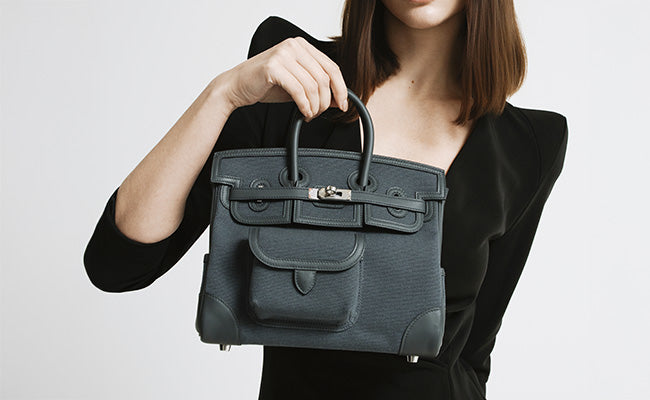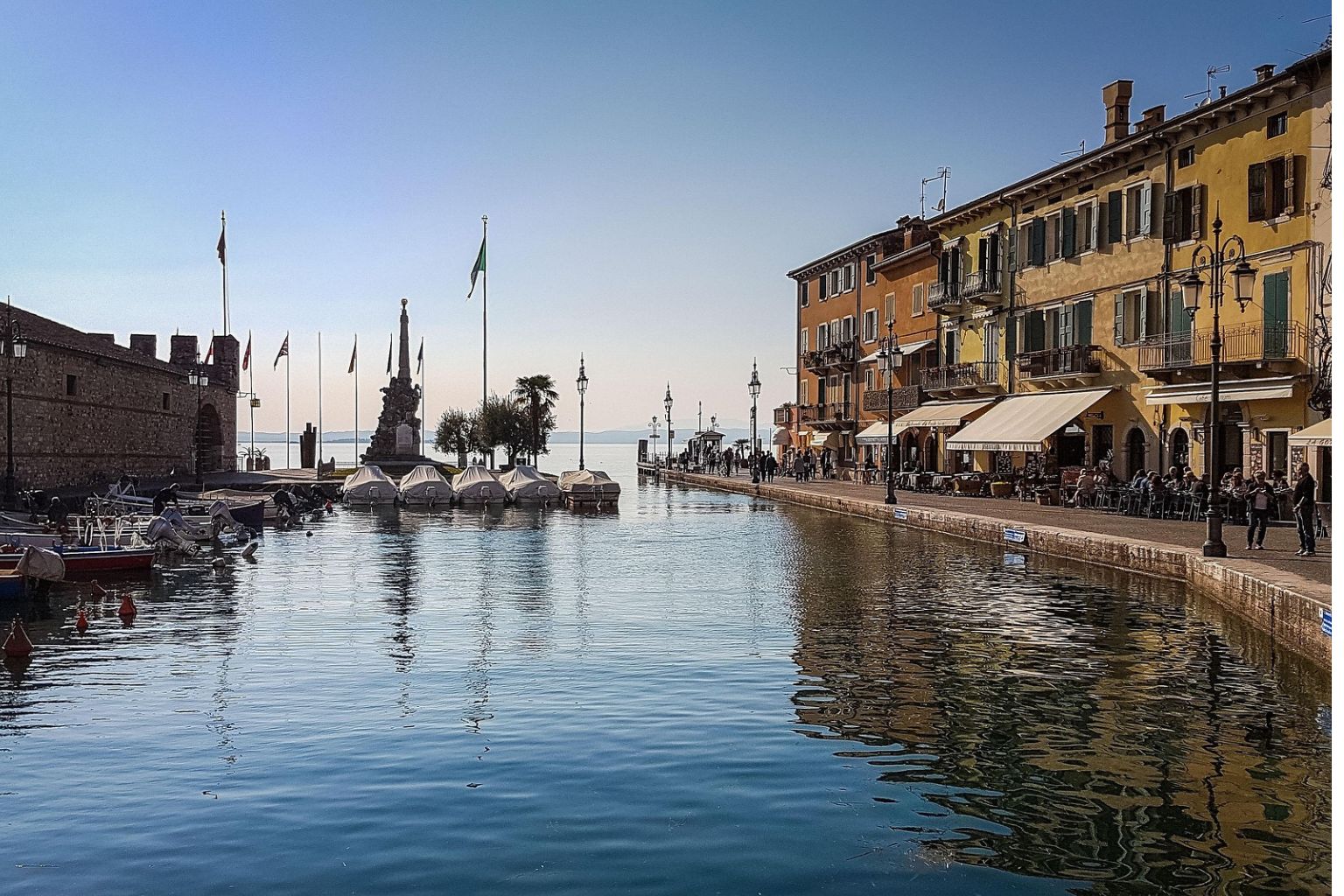
Flying with Exotics: CITES, Airport Checks, and Best Practices
Check out our Hermès collection and Birkin bags!
Flying with exotic pets is way more complicated than just booking an extra seat and hoping for the best.
Whether you're jet-setting with a rare parrot or relocating with your beloved reptile collection, international travel with exotic animals comes with a tangled web of rules that can make even seasoned luxury travellers pause.
CITES permits are absolutely required for most exotic pets crossing borders. If you skip the paperwork, you risk confiscation, steep fines, or worse.
The Convention on International Trade in Endangered Species covers over 40,900 species worldwide, so that gorgeous macaw or striking monitor lizard? Yeah, it almost certainly needs official documents before you can bring it along for the ride.
Airport security and documentation requirements aren't just about ticking boxes. They're about making sure your exotic companion travels safely.
From customs declarations to working with animal transport pros, there's a lot to keep in mind if you want your pet’s journey to be as smooth as your favorite Hermès leather.
Key Takeaways
- CITES permits must be secured before travel and validated by border services, or your exotic pets could be confiscated
- Airport security screening for exotics involves unique documentation checks and handling procedures
- Knowing airline and destination regulations ahead of time is essential for safe, compliant travel with exotic pets
Understanding CITES for Exotic Travel
When you travel with prized exotic leather pieces, you’re stepping into the world of international wildlife protection laws. CITES permits are your golden ticket for legally crossing borders with exotic accessories, and knowing the requirements can save you from expensive headaches at customs.
What Is CITES and Why It Matters
CITES stands for the Convention on International Trade in Endangered Species of Wild Fauna and Flora. It's an international agreement that regulates wildlife trade to keep species from going extinct and to protect biodiversity.
185 countries participate in this treaty. The convention covers more than 6,600 animal species and 34,300 plant species that could be threatened by trade.
In Canada, Environment and Climate Change Canada handles CITES through the Wild Animal and Plant Protection and Regulation of International and Interprovincial Trade Act. The Canada Border Services Agency validates all permits at border crossings.
Why does this matter for luxury collectors? Even personal items made from protected species need proper documentation when you cross borders. That coveted crocodile Birkin or python Kelly? It needs the right paperwork to travel legally.
Types of Exotic Items Covered by CITES
CITES regulations hit any product with parts or derivatives of listed species. For luxury fans, this includes several categories we see all the time.
Exotic leather goods always need permits:
- Handbags made from crocodile, alligator, or python
- Belts with exotic leather trim
- Wallets and small leather goods
- Shoes and boots
- Watch straps
Materials commonly found in luxury items:
- Crocodilian skins (Nile crocodile, American alligator)
- Python and other snake skins
- Lizard leather
- Stingray leather
- Certain exotic furs
Even accessories with just a touch of exotic leather need documentation. If your wallet has a python trim, it still needs the right permits for international travel.
How to Obtain and Verify CITES Permits
Getting CITES permits takes some planning and paperwork. You have to secure all permits before you travel, and applications can take a few weeks to process.
For new purchases: Authorized retailers should provide CITES certificates with exotic items. Hermès, for instance, usually includes these with new exotic buys from their boutiques.
For pre-owned items: This gets trickier. Consignment shops and resellers might not have the original CITES paperwork. No matter how you got the item, you’re responsible for getting the right permits.
Application process in Canada:
- Contact Environment and Climate Change Canada
- Submit species identification and proof of legal purchase
- Pay the required fees
- Wait 4-6 weeks for processing
Verification tips: Real CITES permits have security features, official seals, and a specific format. When buying pre-owned exotics, double-check the documentation before you commit.
Always show your permits to CBSA officers when you travel. If your permit isn’t validated, it’s basically worthless and your item could be seized.
Essential Documentation for Exotics at Airports
Airport security takes CITES paperwork seriously. If you don’t have the right documents, your exotic Birkin or pet parrot could get stuck at the airport. The right permits, proper labeling, and knowing whether to bring originals or copies can be the difference between a smooth trip and a customs disaster.
CITES Tags, Permits, and Certificates
The type of CITES document you need depends on what you’re carrying. Export permits cover new purchases from the source country, like that crocodile Kelly you picked up in Singapore.
Re-export certificates are for items that have already been imported once. This includes your vintage exotic collection or pre-owned pieces from auction houses.
Key documents you’ll run into:
- Export permits for Appendix II species (most luxury exotics)
- Import and export permits for Appendix I species (the most endangered)
- Certificates of ownership for exotic pets (valid for 3 years)
Don’t overlook Box 17 validation. Canadian exports need a CBSA stamp in this box, or the permit won’t work internationally. Without it, customs abroad can legally take your items.
For exotic pets, you’ll need certificates of ownership with microchip numbers, breeding facility info, and the animal’s source. These work like permanent passports for your animals.
Proper Labelling and Declarations
Airport declarations want scientific names, not just common ones. You can’t just write "crocodile handbag" - customs wants Crocodylus niloticus or whatever species your Hermès uses.
Every item needs its own documentation. If you’re carrying three python pieces, each one needs a separate permit entry with quantity, description, and purpose clearly stated.
Essential labeling must-haves:
- Scientific species names matching the permit exactly
- Quantities and measurements
- Purpose codes (T for trade, P for personal)
- Country of origin and export validation stamps
Luxury goods often don’t have CITES tags since finished products usually don’t require them. Raw skins and some items like sturgeon caviar come with official CITES tags and unique numbers.
It’s smart to photograph your permits and items together before you travel. If documents get separated or questioned, this can help prove ownership.
Digital Versus Physical Documentation
You have to bring original physical permits. Digital copies don’t cut it at border crossings, but they’re handy as backups.
Customs agents want to see watermarks, seals, and stamps that only appear on real documents. A phone screen just can’t show these clearly enough.
What to pack:
- Physical originals (must-have)
- Digital backups saved offline
- Contact info for the issuing authority
Some countries use QR codes on permits for easy verification, but don’t count on digital-only systems when crossing borders.
Keep your permits in a protective sleeve so they don’t get damaged. Torn or hard-to-read documents can be rejected, even if they’re real, leaving your exotic purchases stuck at customs.
Navigating International Security Screening
Transporting exotic goods internationally is a whole different ballgame compared to your usual luxury handbag trip. Airport security rules vary a lot between countries, and knowing both TSA and international standards can save you a ton of time and hassle.
Security Rules for Exotic Goods
CITES-regulated items get extra scrutiny at security worldwide. Be ready to present your documentation before any screening starts.
Security staff have to check that exotic goods match their permits exactly. Keep your permits handy. Don’t bury them under your other luxury essentials.
Live animals need pre-clearance with airport security. Most airports want 48-72 hours’ notice for exotic pets or breeding animals. Check with your airline before travel.
Dead specimens, skins, or preserved items trigger extra X-ray checks. Security teams often ask for manual inspections, which can add 30-60 minutes to your time.
Prohibited items lists are longer for exotics. Ivory, certain shells, and some plant materials are banned outright, even with CITES permits.
Pack exotic items in clear, accessible containers if you can. Security teams appreciate transparency, and it speeds up inspections.
Key Differences in Airport Security Globally
European Union airports use standardized exotic goods protocols across member states. Their systems share CITES data, making connections between EU destinations smoother.
United States airports need extra Fish and Wildlife Service clearance on top of TSA screening. This double-check can cause delays.
Asian airports often rely more on manual inspections. Countries like Singapore and Japan have lots of experience with exotics thanks to high trade volumes.
Middle Eastern hubs like Dubai and Doha have some of the most advanced scanning tech. Their imaging systems can identify organic materials with surprising accuracy.
Processing times are all over the map. EU connections might take 15 minutes, but US entry points can stretch to 2+ hours for complicated shipments.
Some countries have quarantine facilities at airports. Australia and New Zealand, for example, have on-site holding areas for suspicious or improperly documented items.
TSA's Role and International Protocols
The TSA works closely with US Fish and Wildlife Service at certain airports. Only specific locations can legally process CITES shipments.
Pre-screening programs like Global Entry don’t speed up exotic goods processing. You’ll still go through full inspection, no matter your status.
TSA agents get special training to spot protected species and materials. Honestly, they’re more knowledgeable about luxury exotics than you might expect.
International protocols mean TSA must notify origin countries about seizures or violations. This creates permanent records that can affect your future travel.
Documentation needs to be digitally accessible through TSA systems. Paper-only permits sometimes cause delays while agents verify with the issuing authority.
CT scanners now do a better job at detecting organic materials than old-school X-rays. This helps tell legal from illegal specimens more accurately.
Airport Screening Processes: What Luxury Travellers Need to Know
Getting through airport security with exotic luxury items takes planning and a bit of strategy. Metal detectors and X-ray machines can be tricky for high-value collectibles, but good documentation and smart packing help a lot.
Preparing Exotics for X-rays and Metal Detectors
Think about how your exotic luxury items will look to security during screening. Hermès hardware, especially on vintage pieces, can set off metal detectors thanks to the palladium or gold-plated parts.
Pack exotic leather goods separately in clear, easy-to-access compartments. Crocodile and ostrich items should be easy to pull out of your carry-on for manual inspection. TSA officers might want a closer look at unique textures or construction.
Pre-screening checklist:
- Take luxury items out of dust bags
- Put metal-heavy pieces in separate bins
- Keep authentication certificates handy
- Photograph items before travel for insurance
Exotic skins can look odd on X-ray screens. Arrive at least 30 minutes earlier than usual to allow for extra screening time. Security might want to inspect anything they can’t clearly identify on the scanner.
Managing Security Screening with High-Value Items
You can ask for private screening if your items are worth over $10,000. This happens in a separate area with two officers, so you keep better control over your valuables.
Items that need extra care:
- Vintage Hermès pieces with rare hardware
- Exotic skin accessories (crocodile, alligator, ostrich)
- Limited editions
- Custom or bespoke items
Tell security about high-value items before screening starts. Never try to hide luxury goods. It only leads to more problems.
For ultra-valuable pieces, think about shipping them separately with a luxury courier. Many collectors prefer this for museum-quality items or anything worth more than airline insurance covers.
Security staff get training to handle valuables, but you’re still responsible for keeping an eye on your things.
Tips for Smooth Passage at Metal Detectors
Take off all metal accessories before you hit the detectors. That means Hermès belts with big buckles, jewelry, and anything with chunky hardware.
Put watches in your carry-on instead of wearing them through. Vintage timepieces might need extra inspection because of their complex mechanics.
Metal detector tips:
- Empty your pockets
- Remove belts with metal hardware
- Put small leather goods in bins
- Walk through at a normal pace
TSA PreCheck really speeds things up. You can keep shoes, jackets, and belts on, and use dedicated lanes. But even with PreCheck, you might still get extra screening. There’s always some unpredictability.
Millimeter wave scanners spot both metal and non-metal items. You might need to take off bulky jackets or explain odd pocket contents to security.
Insider Insights: Speed, Comfort, and Airport Privileges
Getting through airports with exotic goods takes planning and knowing how to work the system. TSA PreCheck makes security easier, VIP services help with unique cargo, and building a good rapport with airport staff can really smooth things out.
Using TSA PreCheck for Seamless Screening
Honestly, TSA PreCheck is a game-changer if you travel with exotic goods. The program cuts screening time dramatically. Most people clear security in under 10 minutes.
PreCheck members keep shoes, belts, and light jackets on. Laptops and liquids stay in your bag. If you’re carrying exotics as personal effects, there’s less handling and less stress on delicate pieces.
The application needs an in-person appointment and background check. Book ahead. Processing can take weeks. The $78 USD fee covers five years.
Top TSA PreCheck perks:
- Dedicated security lanes
- No shoe removal
- Electronics stay packed
- Shorter waits, even during busy times
Many airports now offer biometric screening for PreCheck members, which speeds things up even more and limits how much your stuff gets handled.
VIP Lanes and Services for Exotic Goods
Premium airport services go well beyond business lounges these days. At many major airports, you’ll find specialized handling just for high-value cargo and personal effects.
Private security screening is now a thing at hubs like LAX, JFK, and Pearson. Instead of waiting in the standard lines, you and your belongings get processed separately. If you’re carrying exotic goods that need extra documentation, this setup gives you and officials more time to verify everything properly.
Some airports even have dedicated check-in desks for corporate clients. For example, Delta has exclusive counters for tech company staff at Seattle-Tacoma International. Luxury goods companies and their reps can access similar perks.
Available VIP Services:
- Private TSA screening rooms
- Expedited customs processing
- Personal handling assistants
- Climate-controlled storage areas
Airport concierge teams often coordinate with customs officials ahead of time. This pre-clearance helps ensure your CITES paperwork gets reviewed without unnecessary holdups at checkpoints.
How to Work with Airport Staff for Your Most Prized Possessions
Getting along with airport staff can make or break your experience when you’re moving exotic items. In our experience, being upfront and organized gets you a long way with both security and customs.
Show up with all your documents neatly sorted in clear folders - think CITES permits, receipts, insurance valuations. If you make their job easier, staff tend to appreciate it.
Be direct about any special handling needs. Exotic leathers might require temperature-controlled storage if you’ve got a layover. Rare specimens should be positioned carefully to avoid damage.
Professional Interaction Tips:
- Dress well - first impressions count
- Speak calmly and confidently about your items
- Hand over extra documentation if they ask
- Tip handlers for truly exceptional service
For trickier shipments, hiring a customs broker is a smart move. These folks know the airport authorities and stay up-to-date on the rules. Their help can keep you out of trouble and avoid expensive delays.
Best Practices for Flying with Exotics
Traveling with exotic items or pets takes some real prep. You need to pack smart, know how to store things safely during the flight, and be ready for any screening surprises.
Packing Hermès and Exotic Items Like a Pro
When you’re flying with precious exotic leather goods or anything CITES-regulated, documents come first. Keep your certificates of ownership and CITES permits in a special travel folder - never toss them in checked bags.
For Hermès bags made from crocodile or ostrich, wrap each one in acid-free tissue paper and use its dust bag if you have it. That’s the best way to prevent scratches and keep the leather in top shape.
Essential packing checklist:
- Original purchase receipts
- CITES documentation (if needed)
- Insurance certificates for high-value items
- Clear photos of your items, taken before you travel
Carry valuables in your hand luggage if you can. Checked bags get tossed around and face temperature swings that can ruin exotic materials.
Go for hard-shell luggage with TSA-approved locks. If you’re really serious, look into luxury travel cases made for high-end accessories.
Handling, Storage, and Onboard Care
Once you’re on the plane, put exotic leather items in the overhead bin - not under the seat, where they might get kicked or squished. The cabin’s stable environment helps maintain leather quality.
Temperature matters a lot for exotic materials. Don’t stash your things near vents or windows where temps can swing wildly.
If you’re transporting live exotic pets as cargo, check that the plane has climate-controlled holds. Lufthansa and KLM, for instance, offer animal transport with temperature monitoring.
It’s worth checking on your items during long flights. Exotic leathers can react to cabin humidity changes. If something seems off, let the crew know right away.
In-flight storage priorities:
- Climate stability over convenience
- Protection from passenger traffic
- Easy access if you need to check on things
Never leave exotic items unattended in lounges or at the gate during layovers.
What to Do if Issues Arise During Screening
If security raises questions about your exotics, stay calm and cooperative. Customs officers are trained to spot wildlife products, so having your paperwork ready saves time.
If they ask about CITES-regulated items, show your certificates immediately. Make it clear these are personal possessions, not for sale. Keep your tone respectful and stick to the facts.
Common screening scenarios:
- X-ray machines flagging dense exotic materials
- Manual inspection of luxury leather goods
- Questions about endangered species compliance
- Requests for more documentation
If your live exotic pet gets held up, call your airline’s cargo department right away. They know the drill and can talk to airport authorities.
Snap photos and write up reports if anything gets damaged during screening. File complaints quickly while it’s all fresh. Most airlines have set procedures for valuable item claims.
Keep backup copies of all permits and certificates in a different spot from the originals. Having digital versions on your phone can be a lifesaver if you misplace the paperwork.
Frequently Asked Questions
What are the latest CITES guidelines I need to follow when jet-setting with my exotic pet?
CITES needs specific permits based on your pet’s appendix listing. Appendix I species (the most endangered) require both a Canadian CITES import permit and an export permit from the country you’re leaving.
Appendix II species need a CITES export permit from the departing country. Most exotics - parrots, reptiles, rare mammals - fall into this group.
Get all your permits before you travel - Canada won’t issue them after the fact. It usually takes 6-8 weeks, so don’t leave this until the last minute.
Permits are free from Environment and Climate Change Canada. If you want them fast, you just pay courier fees.
Could you walk me through the airport check process when I'm travelling internationally with an exotic animal?
You’ll hit several checkpoints where officials examine your CITES paperwork. Wildlife enforcement and border agents will check that your permits match your pet and your travel details.
Expect extra screening for your exotic companion. Officers might physically inspect the animal and verify permit numbers in international databases.
You’ll need health certificates and vet records, too - keep them handy with your CITES permits.
Plan for the whole process to add 30-60 minutes to your airport routine. Arrive early to avoid stress and make sure you don’t miss your flight.
Are there any chic carriers recommended for ensuring my exotic pet's comfort and safety in-flight?
Sherpa and SturdiBag make stylish carriers that meet IATA standards and still look sharp. They’re good for small exotics - birds, little mammals, that sort of thing.
For odd sizes or unusual animals, custom carriers are the way to go. Variocage, for example, can build something that fits airline rules and keeps your pet comfy.
Ventilation is even more important for exotics than for cats or dogs. Look for carriers with lots of air holes and mesh panels so your pet doesn’t overheat.
Hard-shell carriers are best for nervous or feisty animals. Petmate Sky Kennel is a solid choice - tough, but still looks decent.
What's the scoop on the most pet-friendly airlines for those of us with non-traditional furry companions?
Air Canada usually allows exotic pets in cargo with the right paperwork. Their climate-controlled cargo areas are a plus for sensitive species.
KLM and Lufthansa have some of the best-known exotic animal programs. These European airlines see unusual species more often than most North American carriers.
Private charters like NetJets are the ultimate in flexibility. You skip the airline rules altogether, though the cost is, well, exclusive.
Every airline has its own banned species list. Don’t assume what works on one will work on another - always check before you book.
Could you give me the A to Z on the best practices for flying with exotic animals, keeping both style and regulation in mind?
Start with a vet check 30 days before you travel. Your exotic pet needs health certificates and any required shots or treatments.
Book direct flights if you can - less handling, less stress, fewer chances for paperwork to get lost.
Pack your pet’s favorite bedding or comfort items in the carrier. Familiar smells help keep them calm.
Coordinate with the airline’s cargo staff about when and where to pick up your pet. The less time spent on the ground after landing, the better for everyone.
How do I breeze through customs with my exotic pet without encountering the usual rigmarole?
Keep all your paperwork - CITES permits, health certificates, species IDs - together in a decent portfolio. Throw in some labeled dividers so you’re not fumbling at the counter.
Declare your exotic pet right away. Don’t wait for someone to ask; just be upfront. It saves time, shows you’re not hiding anything, and customs folks tend to appreciate that.
Learn your pet’s scientific name and its CITES appendix status. If you can chat a bit about your animal’s background or conservation status, it goes a long way. Officials notice when you know your stuff.
If things get complicated, or your pet is especially rare or valuable, maybe shell out for a customs broker. Sure, it’s an extra cost, but it can save you a world of hassle - and nobody wants their beloved critter stuck in limbo.




